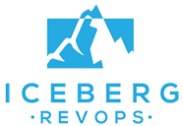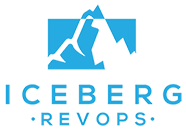Reporting on key business metrics is notoriously tricky for scaling companies.
This is particularly true if you’re working with a tech stack that’s poorly integrated and you don’t have a data engineer or a business intelligence expert on staff. When that’s the case, preparation for a board meeting is like doing a 3000-piece puzzle without looking at the picture on the box.
Without a holistic view, you face at least a week’s worth of scrambling around trying to figure out how to merge data from multiple sources so you can calculate the critical metrics you need to report on.
The challenge of multiple data sources
The reality is that for companies with core data spread across multiple systems, Salesforce doesn’t necessarily work well as a source of truth. It can do, but only if it’s properly configured.
Take the case of a company using Sales Cloud as a sales analytics suite. To understand how the sales team is impacting revenue, they’ll need to pipe in data from other platforms—such as Stripe in the case of financial data. Unless this is done very carefully, they may find they’ve created a hard-to-manage repository that simply wasn’t designed to do what’s being asked.
Here’s the thing: Salesforce is a really great motorcycle. Adding a sidecar to accommodate one other person is okay. But add more people and you’re going to need a van or a pickup. Every new data source adds another layer of complexity.
Perhaps there’s a suggestion to ETL data from Google Analytics to Snowflake before adding it to a visualization suite.
Or maybe a company has decided to purchase Fivetran to connect all data pipelines. Once this happens, Salesforce ceases to function as a data repository and becomes a data source for Fivetran instead.
Because Salesforce is inherently robust, it can be easy to forget it doesn’t have the flexibility of a relational database. That means seemingly small changes actually require a big lift. For example, when you’re looking to add data not already captured in the basic data structure of Salesforce, you need to use custom objects to customize the relationships between the base data and the non-native data to be added. Then you need to customize the standard Salesforce user interface to develop views of the combined information.
These changes require the services of a seasoned Salesforce admin or a developer familiar with Apex, Salesforce’s object-oriented programming language. Skills of this kind are not always easy to find.

Nail Your First Ops Hire and Avoid Costly Mistakes Most Startups Make
When you’re ready to hire in-house for operations, what should you look for? What combination of skills will make the biggest impact? How can you make a smart hire today and support a long-term hiring strategy? This white paper steps through:
- Categories for a first operations hire
- Recommended interview questions
- The exact evaluation matrix Iceberg uses to hire for its own team
When the pain becomes most acute
In large companies, it’s not unusual to find teams of highly experienced data and analytics specialists hired for the express purpose of consolidating key business metrics in single apps such as Tableau or Sisense.
Small companies typically lack the resources to employ experts with rarefied data science and analysis skills. As a result, they often find themselves stuck with clumsy, cobbled together spreadsheets that need manual updating and become more unwieldy and unmanageable with every additional tweak.
And that’s why board meeting prep time is when most small businesses really feel the crunch.
Business intelligence in an ideal world
Scaling spreadsheets for tracking metrics across a complex business reality is very difficult and expensive. In an ideal world, company executives preparing for a board meeting would simply refresh a dashboard that includes all of their key metrics.
How Iceberg RevOps can help
Iceberg builds sales and marketing operations for fast-growing B2B startups who need access to RevOps expertise before they’re ready to hire their own qualified resources.
Set up a call with Iceberg’s team and talk through what you want to accomplish. Once we know what’s in your tech stack, what you have today in terms of reporting/BI, and what you want to achieve, we can get to work building a dashboard that meets your needs.
We can involve our own data engineer and data visualization team as part of your Iceberg engagement. We can also do BI projects as stand-alone engagements.
When you entrust a data project to us, we handle every aspect. That includes:
- Architecture: deciding what should live where to create a high-performance BI setup
- ETL: moving the data
- Visualization development: making pretty/helpful dashboards
Contact us today learn more about how we can help you get the data you need to populate helpful and informative reports.


